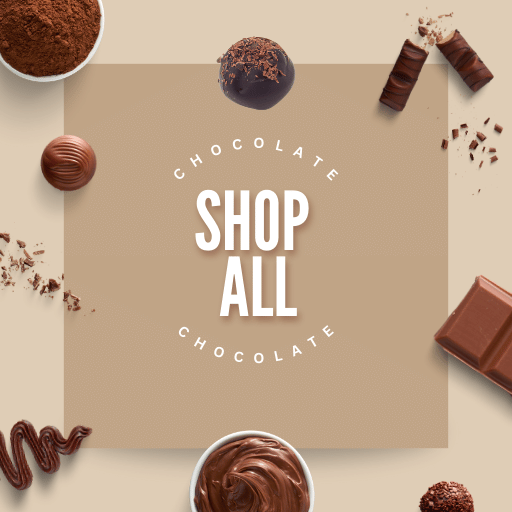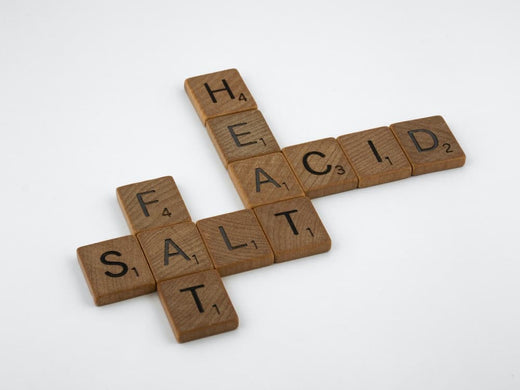Do you find yourself craving a delicious piece of chocolate only to experience the unpleasant sensation of heartburn afterwards?
If so, you're not alone. Chocolate is a popular treat enjoyed by millions around the world, but for some, it comes with a rather uncomfortable side effect.
In this post, we will delve into the reasons why chocolate may cause heartburn in certain individuals.
We will explore the relationship between chocolate and our digestive system, the role of certain compounds found in chocolate, and how these factors may contribute to this discomfort.
By gaining a better understanding of these mechanisms, you will be better equipped to manage and possibly even prevent heartburn caused by chocolate.
Why Does Chocolate Give Me Acid Reflux and Heartburn?
Chocolate can give you heartburn and acid reflux because it contains caffeine and theobromine, which can relax the lower oesophagal sphincter (LES), allowing stomach acid to flow back into the oesophagus.
Additionally, chocolate is high in fat, which can slow down digestion and increase pressure in the stomach, further contributing to acid reflux.
What is Acid Reflux, and What Causes It?
Acid reflux, also known as gastroesophageal reflux (GER), occurs when stomach acid flows back into the oesophagus, the tube that connects your mouth to your stomach.
This backward flow can cause irritation and inflammation in the oesophagus, resulting in a burning sensation in the chest, commonly known as heartburn.
The primary cause of acid reflux is the weakening or dysfunction of the lower oesophagal sphincter (LES), a ring-like muscle at the junction of the oesophagus and stomach.
The LES is responsible for keeping stomach acid in the stomach and preventing it from flowing back into the oesophagus.
Several factors can weaken the LES or increase stomach pressure, leading to acid reflux:
-
Hiatal hernia: A condition where the stomach bulges through the diaphragm into the chest cavity, causing the LES to weaken.
-
Certain foods and drinks: Caffeine, alcohol, chocolate, fatty foods, spicy foods, and citrus fruits can relax the LES or increase stomach acid production.
-
Obesity: Excess body weight can put pressure on the stomach, forcing acid into the oesophagus.
-
Smoking: Tobacco use can weaken the LES and stimulate acid production.
-
Pregnancy: Hormonal changes and increased abdominal pressure can lead to acid reflux.
-
Certain medications: Some drugs, like pain relievers, antidepressants, and calcium channel blockers, can affect the LES or increase acid production.
Managing these risk factors can help prevent or alleviate acid reflux symptoms.
What Should You Do if You Have Persistent Heartburn?
If you have persistent heartburn, it is important to speak to your general practitioner (GP) or healthcare provider, as it might be a sign of a more serious underlying condition.
Chronic heartburn could indicate gastroesophageal reflux disease (GERD), a more severe form of acid reflux that can damage the oesophagus and, if left untreated, may lead to complications such as esophagitis, oesophagal strictures, or Barrett's oesophagus.
Your GP can evaluate your symptoms, perform necessary tests, and recommend appropriate treatment options to manage your condition effectively.
Apart From Chocolate, What Other Foods Can Trigger Acid Reflux?
Acid reflux, also known as gastroesophageal reflux disease (GERD), can be triggered by a variety of foods and beverages.
While everyone's triggers can vary, common culprits apart from chocolate include:
-
Citrus fruits and juices: These are high in acid and can irritate the oesophagus, causing acid reflux symptoms.
-
Spicy foods: Foods high in spice can aggravate GERD symptoms in some individuals.
-
Garlic and onions: These flavourful foods can also trigger acid reflux in some people.
-
Fatty and fried foods: High-fat foods take longer to digest, which can put pressure on your stomach and exacerbate GERD symptoms.
-
Caffeinated drinks: Coffee, tea, and other caffeinated beverages can stimulate acid production, leading to acid reflux.
-
Alcohol: Alcohol can relax the lower oesophagal sphincter, allowing acid to reflux back into the oesophagus.
-
Tomatoes: Tomatoes and tomato-based products, like pasta sauce and ketchup, are acidic and may trigger acid reflux.
-
Peppermint: Though soothing for many ailments, peppermint can also relax the lower oesophagal sphincter, exacerbating GERD symptoms.
-
Carbonated drinks: The bubbles from these beverages can lead to bloating, which increases pressure in the stomach and can trigger acid reflux.
It's important to remember that triggers can vary from person to person.
What might cause acid reflux in one individual might not in another.
If you have frequent acid reflux, it's best to keep a food diary to identify your specific triggers and discuss them with your doctor.
(You might also enjoy reading this post: Can You Eat Milk Chocolate On the Keto Diet?)
What Foods Can Help Alleviate Acid Reflux?
Several foods can help alleviate acid reflux by promoting proper digestion, neutralising stomach acid, or soothing the oesophagus.
Some of these foods include:
-
Ginger: Known for its anti-inflammatory properties, ginger can help reduce inflammation in the oesophagus and aid digestion.
-
Oatmeal: High in fibre, oatmeal can help absorb stomach acid and promote regular bowel movements.
-
Non-citrus fruits: Fruits such as bananas, melons, and apples are less likely to trigger acid reflux compared to acidic fruits like oranges and grapefruits.
-
Green vegetables: Leafy greens like spinach, kale, and broccoli are low in fat and sugar, making them less likely to cause acid reflux.
-
Lean protein: Eating lean protein sources such as grilled chicken, turkey, or fish can help reduce the risk of reflux as they are lower in fat compared to fried or processed meats.
-
Whole grains: Brown rice, quinoa, and whole wheat bread can help absorb excess stomach acid and promote digestion.
-
Almonds: These nuts can help neutralise stomach acid and provide relief from heartburn symptoms.
-
Low-fat dairy: Low-fat or fat-free yoghurts, milk, or cheese can help soothe the oesophagus and reduce the risk of acid reflux.
It is important to remember that individual triggers may vary, and it is beneficial to identify and avoid specific foods that worsen your acid reflux symptoms.
What Are the Best Treatments for Heartburn?
The best treatments for heartburn depend on the severity and frequency of symptoms, as well as any underlying conditions.
Some common treatments include:
-
Lifestyle modifications:
- Avoid trigger foods and drinks (caffeine, alcohol, chocolate, fatty or spicy foods)
- Eat smaller meals and avoid lying down or going to bed soon after eating
- Maintain a healthy weight
- Elevate the head of your bed by 6-8 inches to prevent acid reflux at night
- Quit smoking, as tobacco can weaken the lower esophageal sphincter (LES)
- Wear loose-fitting clothing around the waist to reduce pressure on the stomach
-
Over-the-counter (OTC) medications:
- Antacids: Neutralise stomach acid and provide quick relief (e.g., Tums, Rolaids, Maalox)
- H2 blockers: Reduce acid production (e.g., famotidine/Pepcid, cimetidine/Tagamet)
- Proton pump inhibitors (PPIs): Block acid production for longer-lasting relief (e.g., omeprazole/Prilosec, lansoprazole/Prevacid)
-
Prescription medications:
- Stronger doses of H2 blockers or PPIs may be prescribed for more severe or persistent cases of heartburn
- Prokinetic agents: Increase the strength of the LES and improve stomach emptying (e.g., metoclopramide/Reglan)
-
Surgical interventions:
- In rare cases, when lifestyle changes and medications do not provide adequate relief or complications arise, surgical procedures may be recommended, such as fundoplication, LINX device implantation, or endoscopic treatments.
It is essential to consult with a healthcare professional to determine the most suitable treatment plan based on your specific symptoms and needs.
Heartburn Or Not - Chocolate Is Best Enjoyed as a Treat!
Whether you suffer from heartburn or not, chocolate should always be enjoyed as a treat for everyone.
Treating chocolate as an occasional indulgence instead of a staple in your diet helps promote a balanced and healthy lifestyle.
For individuals with sensitivities, as well as those mindful of health benefits, choosing dark chocolate with a high cocoa content (at least 70% or more) is a wise option.
Dark chocolate generally has less sugar and provides valuable nutrients like antioxidants and flavonoids, which can positively influence heart health.
Remember, moderation is the key to savouring chocolate!
Final Notes On Why Chocolate Gives You Heartburn
Chocolate can give you heartburn due to the presence of caffeine and theobromine, which relax the lower oesophagal sphincter (LES) and allow stomach acid to flow back into the oesophagus.
The high-fat content in chocolate can also slow down digestion and increase pressure in the stomach, contributing to acid reflux.
To manage heartburn related to chocolate consumption, it is essential to recognize and avoid specific triggers.
You may opt for dark chocolate with a high cocoa content, as it typically contains less sugar and offers health benefits.
Moderation is crucial when enjoying chocolate to minimise the risk of heartburn.
If you experience persistent heartburn, consult your healthcare provider to assess any underlying conditions and determine the most suitable treatment plan.
Additionally, adopting lifestyle changes, such as eating smaller meals, maintaining a healthy weight, and avoiding trigger foods, can help alleviate heartburn and acid reflux symptoms.











